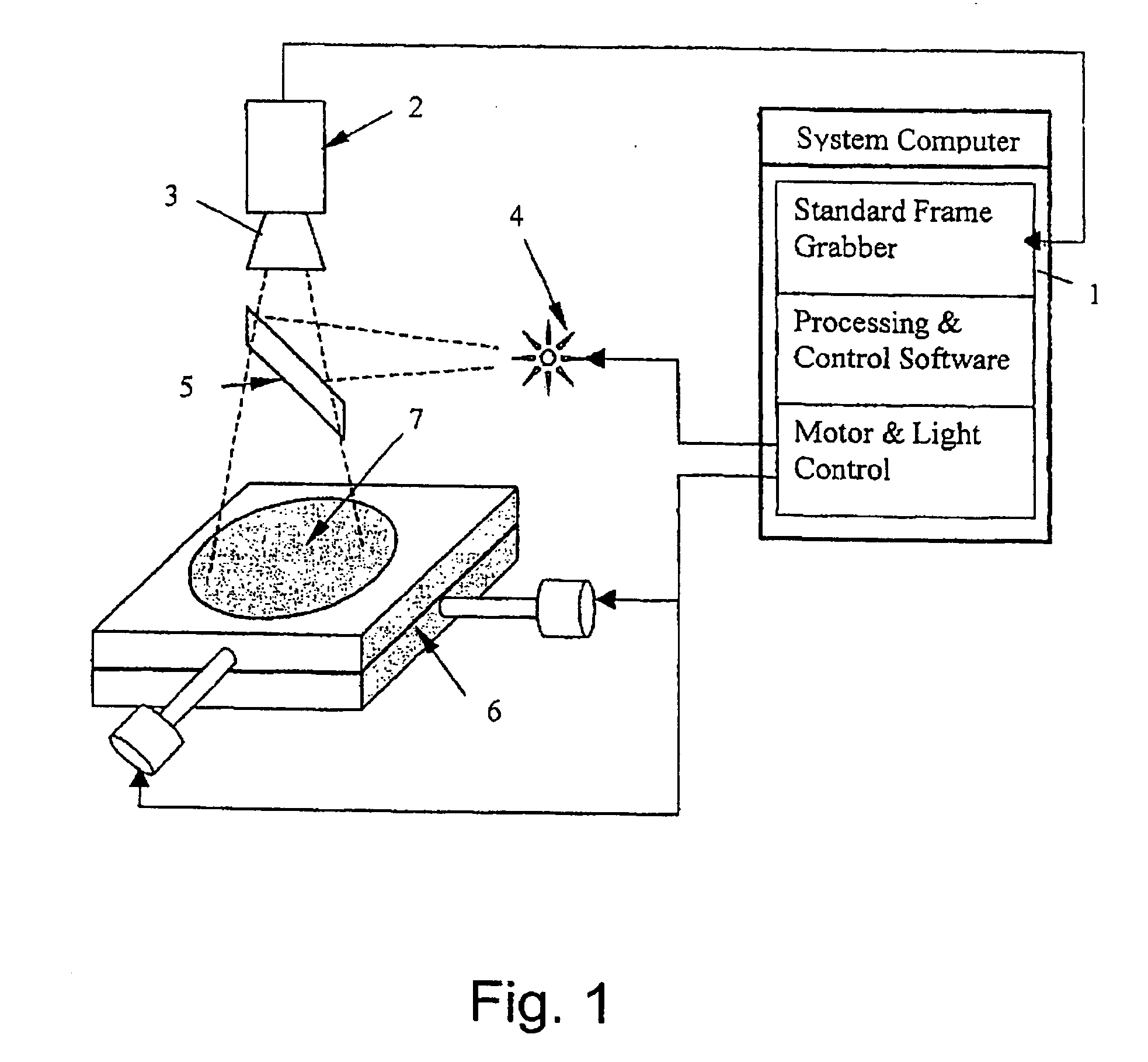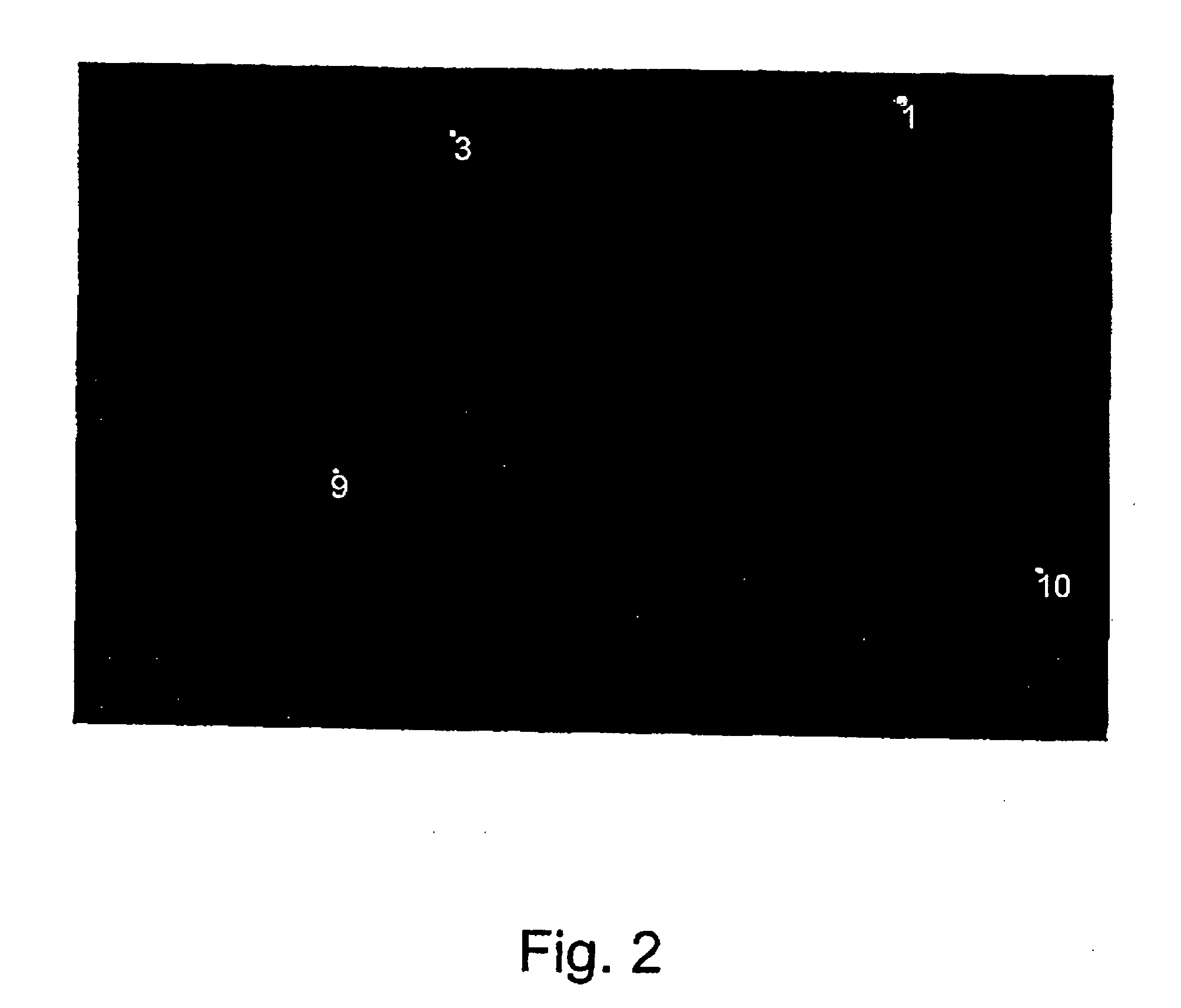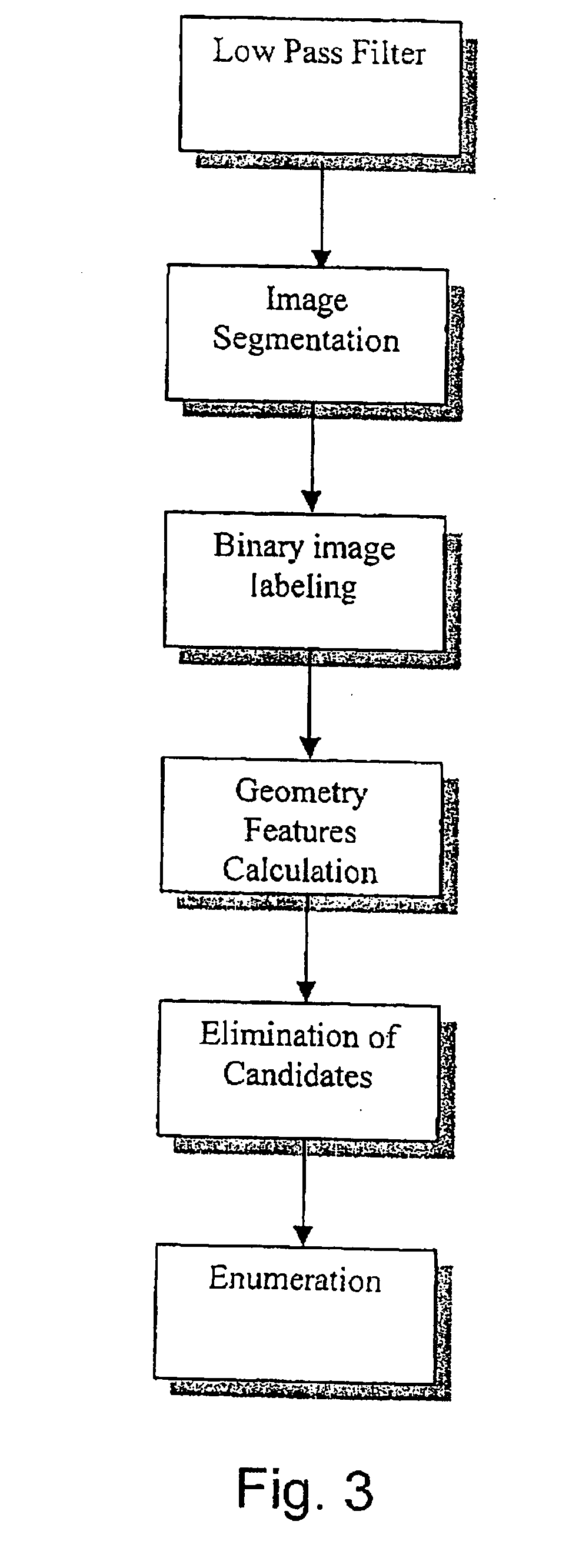Method for the detection of viable microorganisms
a microorganism and detection method technology, applied in the field of detection methods of viable microorganisms, can solve the problems of requiring water supply alternatives, requiring water supply shutdown, and time required for obtaining them, and achieve the effect of enhancing bacteria absorption
- Summary
- Abstract
- Description
- Claims
- Application Information
AI Technical Summary
Benefits of technology
Problems solved by technology
Method used
Image
Examples
example 1
Preparation of Sol-gel-coated Glass Slides
[0041] Standard microscope slides were washed in soap water by gentle shaking for 30 minutes, and were then initially rinsed with tap water, followed by an additional rinse with tri-distilled water. The slides were then dried over night in an incubator at (36° C.). The cleansed microscopic slides were then stored in soft paper for further use.
[0042] A typical starting solution for the thin sol-gel film preparation was as follows: 0.9 ml pure pyridine+0.2 ml CUG solution (100 mM)+0.1 ml H2O were stirred for 1 minute (with a small magnet). If the substrate did not completely dissolve only the upper phase of the mixture was used. 0.8 ml of the above mentioned solution were mixed with 0.4 ml of methyltrimethoxy silane (MTMS, Fluka). The whole solution was well mixed by magnetic stirrer for additional 2 minutes. For reaction initiation, 30 μl of HCl 0.1 M were added to the above solution, followed by 5 minutes magnetic stirring.
[0043] The slid...
example 2
Example 1 was repeated, using a 0.1 ml solution of 4′-6-diamino-2-phenyl indole at a 0.016 mg / ml concentration. The results obtained was similar to that of Example 1.
example 3
E. coli Identification and Enumeration
[0044] An E. coli bacteria culture was grown in a nutrient broth for 24 hours at 36° C. A seeded solution of bacteria with an estimated concentration of 108 bacteria / ml was prepared in sterile distilled water. A series of different solutions was prepared (350 ml of each solution) with an anticipated bacteria concentration as follows: 109 bacteria in 100 ml, 108 bacteria in 100 ml, 107 bacteria in 100 ml, 106 bacteria in 100 ml 105 bacteria in 100 ml.
[0045] All bacteria concentrations were verified by performing parallel membrane filtration (MF) test in water samples. This was done by diluting the solution with sterile distilled water in sterile plastic bottles so that a dilution of up to 1:108 was accurately achieved.
[0046] In order to count the bacteria in a given sample the water sample was first filtered through a Millipore filter (0.47 μm, 13 mm). The Millipore filter was then placed upside down on the sol-gel surface. In order to create ...
PUM
 Login to View More
Login to View More Abstract
Description
Claims
Application Information
 Login to View More
Login to View More - R&D
- Intellectual Property
- Life Sciences
- Materials
- Tech Scout
- Unparalleled Data Quality
- Higher Quality Content
- 60% Fewer Hallucinations
Browse by: Latest US Patents, China's latest patents, Technical Efficacy Thesaurus, Application Domain, Technology Topic, Popular Technical Reports.
© 2025 PatSnap. All rights reserved.Legal|Privacy policy|Modern Slavery Act Transparency Statement|Sitemap|About US| Contact US: help@patsnap.com



